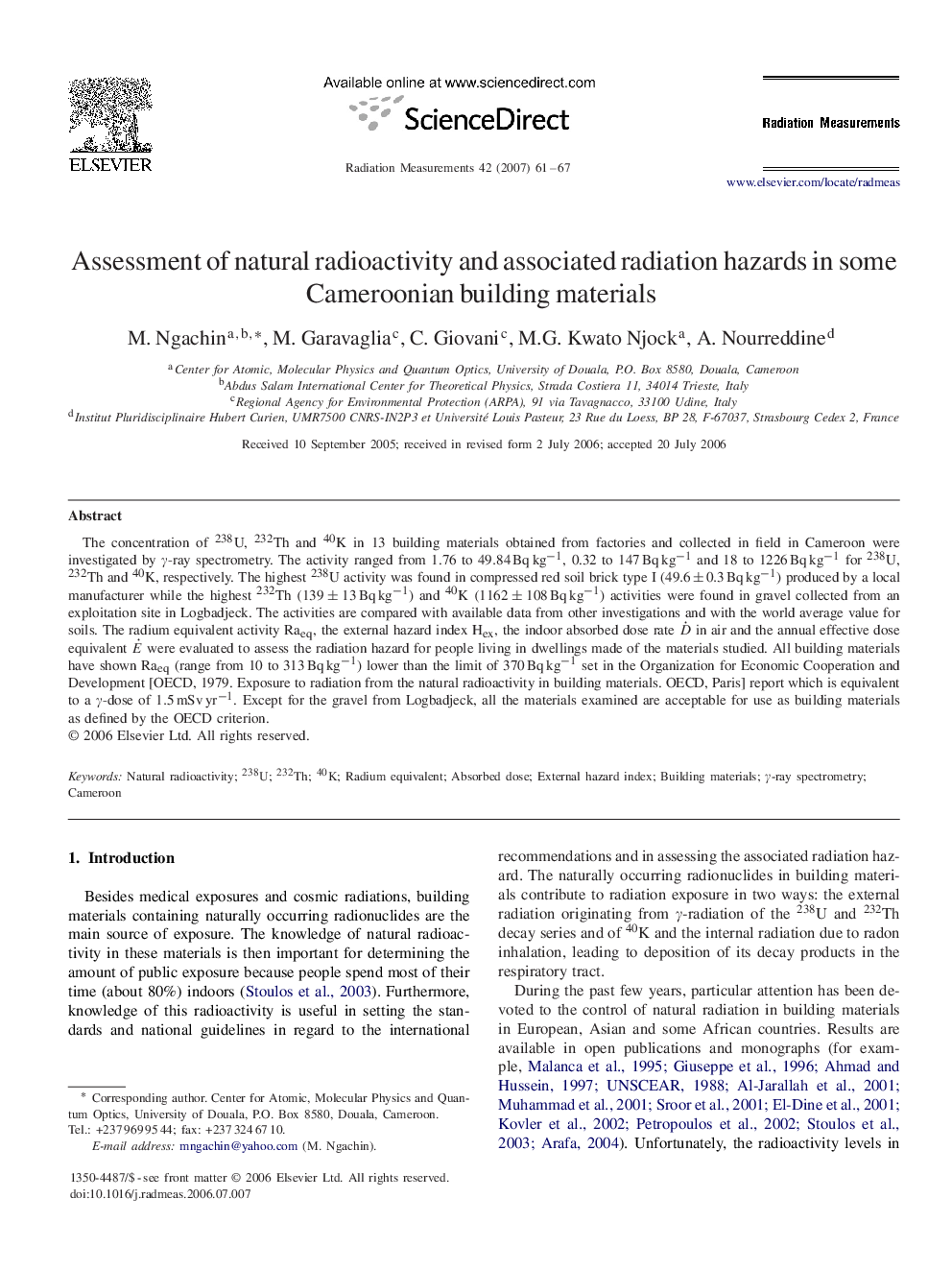| Article ID | Journal | Published Year | Pages | File Type |
|---|---|---|---|---|
| 1884595 | Radiation Measurements | 2007 | 7 Pages |
The concentration of 238U, 232Th and 40K in 13 building materials obtained from factories and collected in field in Cameroon were investigated by γγ-ray spectrometry. The activity ranged from 1.76 to 49.84Bqkg-1, 0.32 to 147Bqkg-1 and 18 to 1226Bqkg-1 for 238U, 232Th and 40K, respectively. The highest 238U activity was found in compressed red soil brick type I (49.6±0.3Bqkg-1) produced by a local manufacturer while the highest 232Th (139±13Bqkg-1) and 40K (1162±108Bqkg-1) activities were found in gravel collected from an exploitation site in Logbadjeck. The activities are compared with available data from other investigations and with the world average value for soils. The radium equivalent activity RaeqRaeq, the external hazard index HexHex, the indoor absorbed dose rate D˙ in air and the annual effective dose equivalent E˙ were evaluated to assess the radiation hazard for people living in dwellings made of the materials studied. All building materials have shown RaeqRaeq (range from 10 to 313Bqkg-1) lower than the limit of 370Bqkg-1 set in the Organization for Economic Cooperation and Development [OECD, 1979. Exposure to radiation from the natural radioactivity in building materials. OECD, Paris] report which is equivalent to a γγ-dose of 1.5mSvyr-1. Except for the gravel from Logbadjeck, all the materials examined are acceptable for use as building materials as defined by the OECD criterion.
